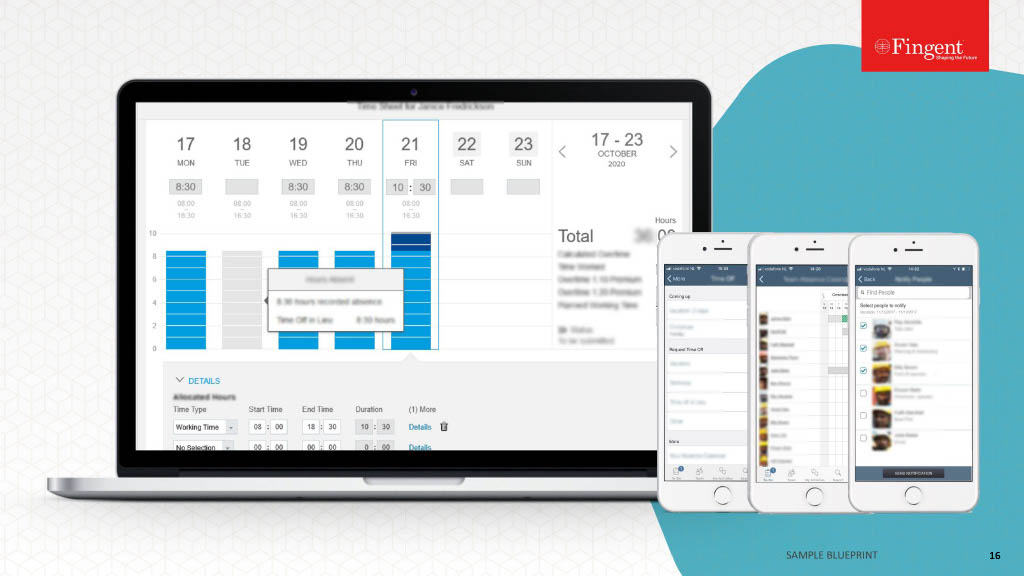Enterprise Application Modernization: A Top Priority For Businesses in 2024
Enterprise Application Modernization is a critical need in a rapidly evolving digital world.
Application Modernization helps drive smart decisions and efficient processes. It also offers businesses a competitive edge. Organizations achieve many digital transformation goals through modernization projects. Application Modernization may be the only way to overcome handicaps baked into existing software that has become difficult to extend, enhance, or maintain.
This blog will take you through the top benefits of Enterprise Application Modernization and the top trends in application modernization to look out for in 2024. But first, let’s look at what Application Modernization means.
What is Application Modernization?
Application Modernization, also known as legacy modernization, is the process of updating an organization’s software to take advantage of newer frameworks, languages, libraries, and infrastructure. Modernization could involve migrating software to a public, private, or hybrid cloud if a business employs on-premises applications. It frequently means employing cutting-edge technologies like cloud computing, microservices, containers, and artificial intelligence. Market Research Future (MRFR) predicts that the market for Application Modernization services will reach $24.8 billion by 2030, expanding at a 16.8% CAGR from 2022 to 2030.
Wondering if you can modernize your Enterprise Application without disrupting your daily operations? Our experts have got your back!
The Top Benefits of Application Modernization
Application Modernization provides several benefits to companies, including increased efficiency, agility, and competitiveness. Here are some of the principal advantages:
1. Scalability: Modernized apps are more easily scaled to support higher transaction volumes, data sizes, and more users – allowing enterprises to adjust to changing business requirements quickly. Scalability future-proofs applications. Moreover, it is easier to find skilled developers to maintain an application when the software has been modernized.
2. Integration With New Technology: Application Modernization is an opportunity to take advantage of new technologies like Cloud Computing, Microservices, Containerization, and Artificial Intelligence – advances that can extend an application’s capabilities and performance more rapidly or at lower cost.
3. Enhanced Security: Legacy programs may include security flaws, and legacy application modernization enables firms to apply the most recent security protections. This helps to secure sensitive data and lowers the chance of security breaches.
4. Agility And Quicker Time-To-Market: Modernized apps isolate functional elements better. That means code changes have fewer unintended side effects, making the software more flexible and adaptable and enabling businesses to react swiftly to market changes and client needs. This agility helps to accelerate development cycles and reduce time-to-market for new features or products.
5. Competitive Advantage: Organizations that engage in Application Modernization get a competitive advantage by exploiting cutting-edge technology and keeping up with industry developments. This may result in more market share, happier customers, and more favorable placement in the industry.
Top Application Modernization Trends To Lookout For In 2024
There’s no doubt that Enterprise Application Modernization is becoming inevitable. To stay future-ready, modern businesses must stay updated on the latest trends in application modernization. Here’s an attempt to clarify what companies must watch out for this year to stay relevant in the market.
1. AI-Driven Application Modernization
Combining Artificial Intelligence (AI) with Machine Learning (ML) has become an extremely popular trend. Modernized applications use intelligent elements to improve decision-making, automation, and user experiences. Enterprises are utilizing AI to accelerate and enhance modernization, incorporating intelligent code analysis, automated modification, AI-powered testing, and performance optimization.
2. Microservices
Microservices transform the way we develop apps. Instead of having a single large piece of code, it can be divided into smaller portions that can be modified separately. The transition to microservices architecture and API-centric programming enables better flexibility, scalability, and agility. It encourages flexible development, making it easier to update and maintain individual components of an application without impacting the overall system.
3. Low-Code/No-Code Revolution
The growth of low-code and no-code platforms has eased the application-building process by allowing non-developers to construct apps with little coding. There are several platforms that allow non-developers to create applications with minimal coding work. These platforms let app developers employ visual interfaces and pre-built components to speed application delivery, cut development costs, and enable organizations to adapt quickly to changing market needs.
4. DevOps For Security
The DevOps approaches, such as CI/CD pipelines, are increasingly used to modernize applications. DevOps and automation decrease human interference and reduce human mistakes, increasing operational efficiency and lower costs. The correct DevOps consultancy, tools, teams, and skills enable firms to modernize outdated code in accordance with business goals and requirements. By including security principles throughout the DevOps journey, companies ensure that the highest level of security stays at the core of their updated apps, protecting against security risks.
5. Cloud Native Paradigm
Organizations are rapidly embracing cloud-native architectures, which use cloud services and platforms. This trend is anticipated to continue through 2024. Businesses may gain unmatched scalability, flexibility, and resilience by combining cloud services, containers, and management platforms, allowing for seamless app modernization in a cloud-native environment.
6. Blockchain Integration
Blockchain integration will be a major trend in 2024 for safe and transparent data management. This decentralized method eliminates delays, mistakes, and fraud while increasing accountability and transparency. Businesses may improve security and transparency by integrating blockchain technology into their data exchanges. It is frequently used in applications requiring digital currencies, supply chain management, and data security. It’s also useful for applications that require tamper-proof records and secure transactions.
7. Enhanced Security Systems
This trend is becoming increasingly important as regulatory environments get more complex, mandating an intricate approach to compliance. Organizations may protect their apps from illegal access, data breaches, and cyber threats by implementing effective security policies. Multi-factor authentication, encryption, continuous monitoring, and other security features improve the security of updated systems. This approach enables firms to quickly protect sensitive data, foster user confidence, and assure compliance with data protection rules.
Don’t allow legacy systems to sloth your business growth. Plan your App Modernization success journey with us!
Application Modernization with Fingent
Application modernization is a foundational part of a digital transformation effort. But, it can be a daunting task. With the right technology partner, you can tackle it with confidence. Fingent can assemble a project team to deliver the cost-effective approach you need for your modernization effort, from project planning to production rollout. Let’s talk about it.
Stay up to date on what's new

Recommended Posts

18 Feb 2023 B2B
App Modernization 101: A Guide to Transforming Effectively
Organizations are enhancing their competitiveness by prioritizing digital transformation as the global marketplace becomes increasingly crowded and interconnected. Broadly speaking, the concept of digital transformation involves the systematic evolution of……

21 Nov 2022 B2B
Why App Modernization Projects Fail – The Secret To A Successful App Modernization Project Journey!
Modernization is a desire to stay relevant and grow. App modernization does just that for businesses. It enables them to stay relevant and grow. In line with that, organizations worldwide……

26 May 2022 B2B
It’s Time To Pivot Your Legacy Software To A Platform Ecosystem
Old is gold … but is it? There are some things that get better with age of course, but when it comes to software, it’s a hard NO. Business after……

02 Apr 2021 Financial Services
Why modernize your legacy systems? What’s the best approach to legacy systems modernization?
Identify the best approach to legacy system modernization With changing customer behavior, enterprises have changed their norms and business applications. Now, retailers have to fulfill orders in a multichannel, multitouch……
Featured Blogs
Stay up to date on
what's new























































